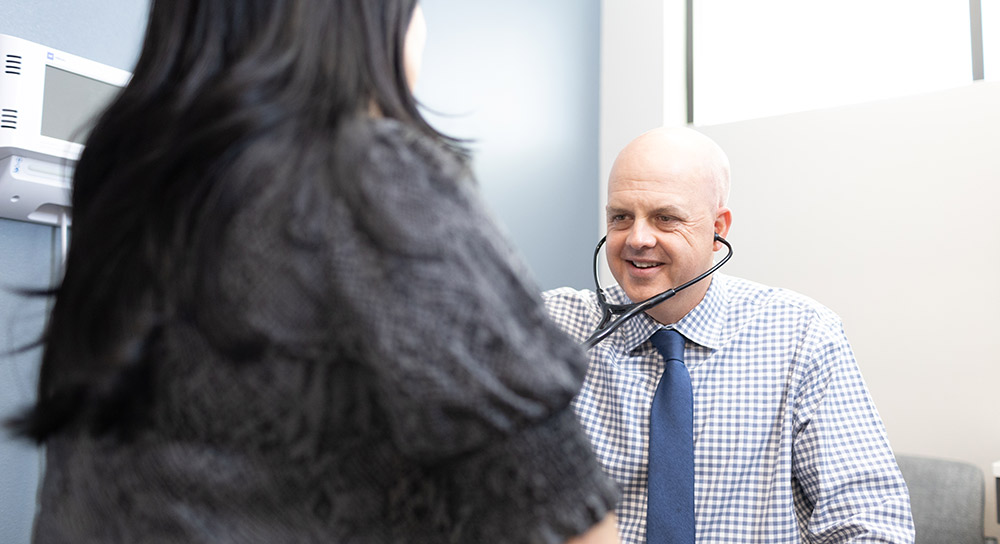 Clovis Community Medical Center is one of six hospitals statewide chosen to study the safety and effectiveness of elective angioplasties in hospitals that do not have open heart surgery on site.
Clovis Community Medical Center is one of six hospitals statewide chosen to study the safety and effectiveness of elective angioplasties in hospitals that do not have open heart surgery on site.
It’s a move that cardiologists say is overdue and is really about accessibility and convenience for patients and for doctors. Currently state law requires hospitals to have a cardiac surgeon on standby whenever patients undergo a non-emergency procedure to insert stents or balloons to open coronary arteries. The pilot project is a precursor to changing that restriction.
“There’s really been a push to let hospitals like Clovis which has an emergency room and an ICU and have been doing emergency stents for 20-some years without a surgeon, to go ahead do the elective angiogram cases,” said Dr. Rohit Sundrani, the lead cardiologist for the Clovis pilot project. He performed the first angioplasty at Clovis for the three-year study which began Aug. 1.
 Clovis Community has always been able to do angioplasties on patients who come in through the emergency room exhibiting symptoms of a heart attack, said Bob Forey, manager of the hospital’s cath lab. “But for patients coming into the hospital with just chest pain and we find out they have a blockage, we had to transfer them to another hospital to remove the blockage. That’s been an added expense for an ambulance and more time before the blockage can be removed and often an extra day in the hospital.”
Clovis Community has always been able to do angioplasties on patients who come in through the emergency room exhibiting symptoms of a heart attack, said Bob Forey, manager of the hospital’s cath lab. “But for patients coming into the hospital with just chest pain and we find out they have a blockage, we had to transfer them to another hospital to remove the blockage. That’s been an added expense for an ambulance and more time before the blockage can be removed and often an extra day in the hospital.”
Linda Kerns, Clovis hospital’s director of ancillary services, said the old state law hampers cardiologists. “In the past we’d admit a patient with chest pain and cardiologists were reluctant to begin an angiogram here, because if they did go in and find a problem that needed stenting they had to transfer the patient elsewhere,” she said.
“The state policies that dictate who can perform a coronary stent or coronary balloon were written 25 years ago,” Dr. Sundrani explained. “The catheter devices are smaller now and the technology has progressed.”
Forey added, “It’s been done in 30 other states and the numbers have shown that if you screen your patients, it’s just as safe as doing it in a facility with open heart surgery - and it’s much more convenient for the patient to have this done at the facility they came to.”
 The six hospitals participating in the pilot project – officially called the Elective Percutaneous Coronary Intervention (PCI) Pilot Program – had to go through rigorous screening by the California Department of Public Health. Cardiologists participating had to be not only double board certified in cardio-vascular disease and interventional cardiology, said Sundrani, but they had to have low rates of patient complications , have done more than 500 angioplasties in their career and have experience in clinical research. Six cardiologists have qualified to participate at Clovis so far.
The six hospitals participating in the pilot project – officially called the Elective Percutaneous Coronary Intervention (PCI) Pilot Program – had to go through rigorous screening by the California Department of Public Health. Cardiologists participating had to be not only double board certified in cardio-vascular disease and interventional cardiology, said Sundrani, but they had to have low rates of patient complications , have done more than 500 angioplasties in their career and have experience in clinical research. Six cardiologists have qualified to participate at Clovis so far.
Although the hospital was not required to change its cath lab, Clovis did install new technology, said Forey, including an intravascular ultrasound (IVUS) probe that’s small enough to put inside an artery and show a detailed view from the inside out to show where plaque is impeding blood flow.
“We really want people to know they have another option for heart blockages,” said Forey.
This story was written by Erin Kennedy. She can be reached at ekennedy@communitymedical.org.



 Clovis Community Medical Center is one of six hospitals statewide chosen to study the safety and effectiveness of elective angioplasties in hospitals that do not have open heart surgery on site.
Clovis Community Medical Center is one of six hospitals statewide chosen to study the safety and effectiveness of elective angioplasties in hospitals that do not have open heart surgery on site.

